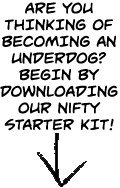In my opinion, there are three phases to drawing the figure: gesture, construction, and rendering. None of these phases is independent from the others. Gesture captures the essence of the figure’s pose — it records the kinetic energy of a moment in time. If anything can be said to breathe life into a drawing, it’s gesture. Construction is the phase where knowledge of shape and anatomy are employed to methodically build a three-dimensional figure within the page. This is the part of figure drawing where many of the visual “problems” of the figure — problems that involve not just anatomy but perspective — are solved. Rendering draws focus to issues of appearance, primarily lighting. Proper lighting grounds the figure and accentuates depth.
Often, these phases overlap. Gesture and construction can happen at the same time, with rough lighting and shadows added before either phase is fully resolved. Some people skip construction entirely and rely on rendering to establish the form. However you choose to approach things, know this: gesture is the most important. More than a rough sketch or plan to be finalized later, it is the soul of your drawing. Everything else builds off of it and threatens to diminish its impact. read more»
















